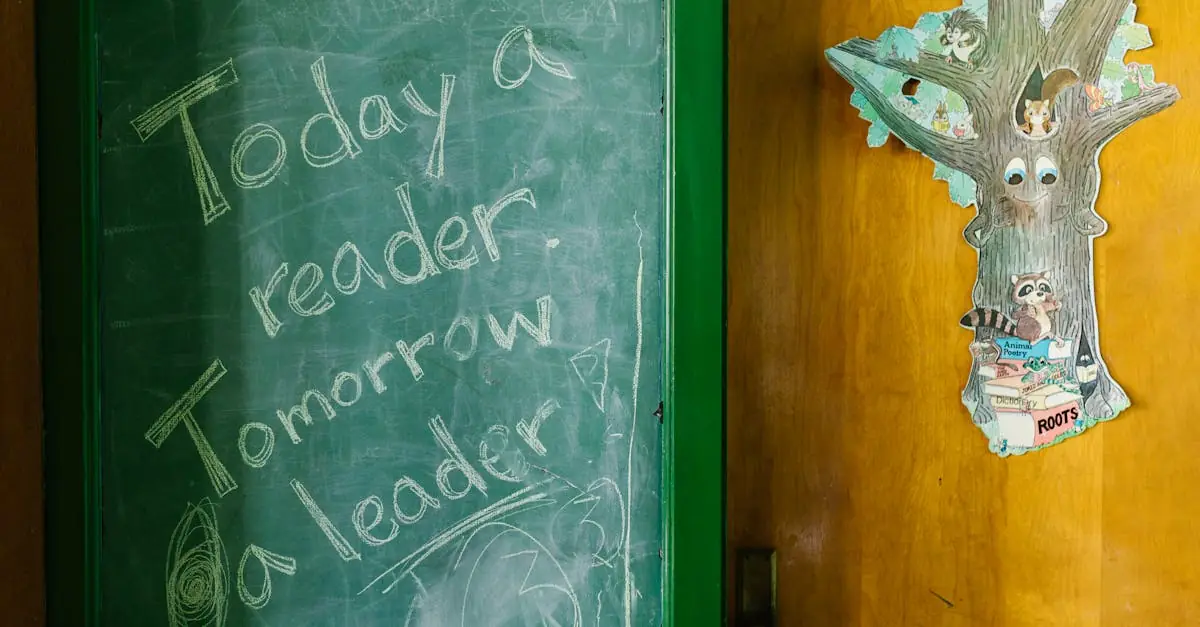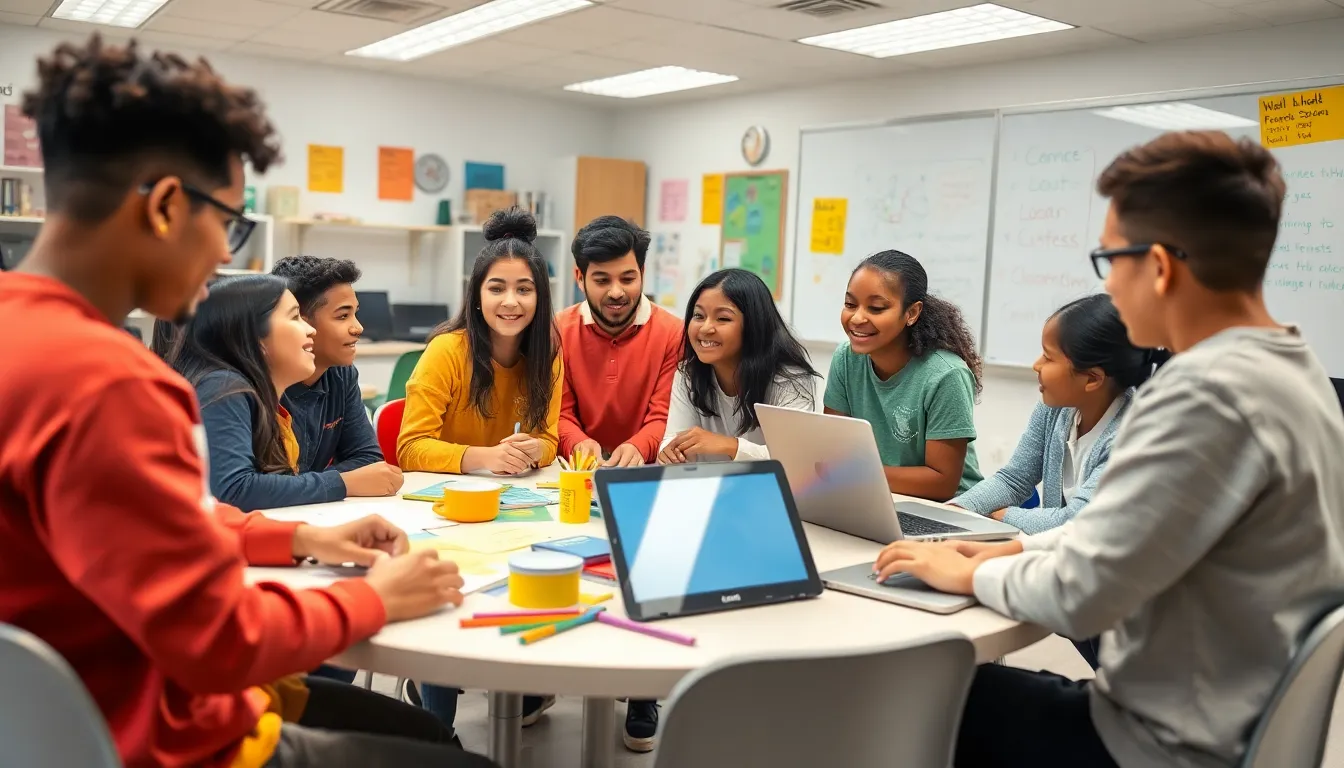Education today is like a rollercoaster ride—full of ups, downs, and unexpected twists that leave everyone wondering if they should scream or laugh. With technology advancing faster than a speeding bullet and classroom dynamics shifting like sand, it’s no surprise that students, teachers, and parents are feeling a bit dizzy.
From the challenges of remote learning to the pressure of standardized tests, the landscape of education is changing rapidly. But hey, it’s not all doom and gloom! These issues also present opportunities for innovation and growth. So grab your metaphorical pencil and buckle up, because diving into the quirks and quandaries of today’s education system might just be the adventure you didn’t know you needed.
Table of Contents
ToggleOverview of Issues in Education Today
Education today faces numerous challenges influencing students, teachers, and parents. Rapid technological advancements affect classroom dynamics, shifting traditional learning to online platforms. Remote learning has emerged as a necessity, creating disparities in access to resources. Low-income students often encounter barriers to effective online education, resulting in a widening achievement gap.
Standardized testing pressures contribute significantly to student anxiety. Students frequently spend weeks preparing for tests that may not accurately reflect their learning or abilities. Educators feel compelled to teach to the test, diverting attention from creative and critical thinking skills. Overemphasis on grades can stifle genuine engagement in learning.
In addition, mental health issues among students are rising. Increased stress from academic pressure, combined with social isolation during remote learning, exacerbates this crisis. Parents express concerns about their children’s emotional well-being, leading to heightened demand for school mental health resources.
Curriculum relevance also presents an ongoing issue. Many students feel disconnected from what they learn because curricula often overlook contemporary societal challenges, such as climate change and social justice. Relevant and engaging content can spark interest and motivation, making it crucial for educators to adapt their teaching methods.
Equity in education continues to demand attention. Students from marginalized communities face systemic obstacles limiting their educational opportunities. Promoting inclusivity and ensuring diverse perspectives within educational environments fosters equity.
Responding to these challenges involves innovation and collaboration. Schools must leverage technology and prioritize mental health programs while advocating for equitable access to education. Exploring solutions can lead to a more resilient education system, supporting all learners amidst adversity.
Major Challenges Faced by Educators
Educators encounter various challenges that affect their ability to deliver quality education. Key issues include teacher shortages and curriculum relevance.
Teacher Shortages
Teacher shortages significantly impact classroom learning. According to recent studies, many districts struggle to find qualified educators, primarily in subjects like math and science. Increased turnover rates compound this issue, as many new teachers leave the profession within the first five years. This lack of stability affects student performance and teacher morale. Different strategies, such as improved pay and support programs, aim at attracting and retaining teachers. Innovative recruitment initiatives also focus on encouraging underrepresented populations to join the profession. Restructuring the teaching environment can alleviate some of these shortages, creating a more sustainable workforce for schools.
Curriculum Relevance
Curriculum relevance remains a pressing concern in today’s education system. Many students express disconnection from material that doesn’t reflect current societal issues like climate change and social justice. Adjusting curricula to include these topics fosters greater engagement and critical thinking. Additionally, collaboration among educators to develop interdisciplinary approaches enhances student learning experiences. Integrating technology into lessons also provides contemporary perspectives that resonate with students. Prioritizing curriculum relevance ensures students see the value in their education and feel prepared for real-world challenges. Addressing this issue lies in the hands of educators and administrators committed to evolving educational practices.
Student Learning Barriers
Student learning barriers significantly impact educational outcomes, especially in today’s complex environment. These challenges affect students across various dimensions.
Socioeconomic Factors
Socioeconomic status influences access to educational resources. Students from low-income families often lack critical tools like reliable internet, dedicated study spaces, and tutoring support. A report from the National Center for Education Statistics shows that 14% of students lacked internet access during remote learning. This digital divide exacerbates the achievement gap. Schools in high-poverty areas typically experience decreased funding, limiting instructional quality and access to advanced coursework. Communities must prioritize equitable resource distribution to lessen these disparities.
Mental Health Concerns
Mental health concerns among students are on the rise. With academic pressures and social isolation increasing, many students experience anxiety and depression. The American Psychological Association notes that 70% of students report significant stress related to school demands. These mental health challenges can hinder focus and retention, directly impacting academic performance. Schools must integrate mental health support into educational frameworks, fostering environments that promote emotional wellness. Prioritizing mental health initiatives can enhance student resilience and overall learning experiences.
Technological Impacts on Education
Technological advancements greatly influence education today, posing both opportunities and challenges.
Online Learning Challenges
Online learning presents unique challenges for students and educators. Engagement often wanes in virtual classrooms, leading to decreased motivation. The lack of immediate interaction with peers and teachers can hinder understanding and retention of material. Additionally, students encounter varying levels of technical proficiency, which complicates their learning experiences. The American Psychological Association notes significant anxiety among students regarding remote assessments, further impacting their performance. Such factors can create barriers to effective learning and contribute to widening achievement gaps.
Digital Divide
The digital divide remains a pressing concern in education. In the United States, 14% of students lacked internet access during remote learning, highlighting disparities in educational opportunities. Low-income students are disproportionately affected, unable to benefit from online resources and learning tools. Consequently, these inequities can lead to significant gaps in achievement and knowledge retention. Schools must prioritize equitable access to technology and internet resources, ensuring all students can engage fully in their education. Bridging this divide is essential for fostering an inclusive learning environment.
Policy and Reform Discussions
Calls for reform in education often highlight funding inequalities and standardized testing issues. These challenges significantly impact student success.
Funding Inequalities
Funding inequalities starkly affect educational opportunities. Low-income districts receive fewer resources, limiting access to essential tools. A disparity in funding contributes to a widening achievement gap among students. According to a 2020 report from the National Center for Education Statistics, these issues exacerbate struggles in low-income communities. Many students in underfunded schools lack basic materials, which diminishes their chances for success. Bridging this gap involves advocating for equitable funding policies and reallocating resources to ensure all students receive quality education.
Standardized Testing Issues
Standardized testing issues create immense pressure on students and educators. Anxiety around tests can hinder student performance and discourage innovative teaching methods. The American Psychological Association notes that 70% of students experience significant stress due to school demands, which includes test preparation. Additionally, a heavy focus on testing often stifles critical thinking and creativity in classrooms. This narrowing of the curriculum detracts from meaningful learning experiences. Reforming testing practices can alleviate pressure and foster environments where students engage more holistically with their education.
The landscape of education today is marked by significant challenges that require urgent attention. As students and educators navigate these turbulent waters it’s clear that innovative solutions and collaborative efforts are essential. Addressing issues like the digital divide and mental health will foster a more equitable and engaging learning environment.
By prioritizing curriculum relevance and supporting teachers, schools can create a more inclusive atmosphere that prepares students for the complexities of modern society. Embracing these changes not only enhances educational experiences but also empowers the next generation to thrive in an ever-evolving world.




